RefA?A?: HR039/PR/2008A?A?A?A?A?A?A?A?A?A?A?A?A?A?A?A?A?A?A?A?A?A?A?A?A?A?A?A?A?A?A?A?A?A?A?A?A?A?A?A?A?A?A?A?A?A?A?A?A?A?A?A?A?A?A?A? A?A?A?A?A?A?A?A?A?A?A?A?A?A?A?A?A?A?A?A?A?A?A?A?A?A?A?A?A?A?A?A?A?A?A?A?A?A?A?A?A?A?A?A?A?A?A?A?A?A?A?A?A?A?A?A?A?A?A?A?A?A?A?A?A?A?A?A?A?A?A?A?A?A?A?A?A?A?A?A?A?A?A?A?A?A?A?A?A?A?A?A?A?A? 14 February 2008
Sri lankan rulers deliberately create
Political turmoil among the Tamils
Who prevents MuslimsA?a??a?? resettlement in Jaffna?
A?A?
There is a long history of Internally Displaced People (IDPs) in Sri Lanka A?a??a?? it goes back to the post independence era, around 1956.
Soon after Sinhala rule was introduced in Ceylon, (present Sri Lanka), two communal riots were carried out by the Singhalese against the Tamils, masterminded by the respective governments of the day. A?A?These two riots in 1956 and 1958 made Tamils as refugees in the South of the island. Because the victims of these two riots, although refugees, had not crossed any internationally recognised borders, International bodies like the United Nations considered them to be Internally Displaced People (IDPs). Since 1956 there have been five communal riots carried out with a clear agenda of ethnic cleansing. Tamils were killed, raped, disappeared and billions worth of their properties were looted and destroyed.
All these riots and atrocities have been well documented by the UN and many international human rights and humanitarian organisations.
The numbers of displaced Tamils during these communal riots are as follows :
YearA?A?A?A?A?A?A?A? A?A?A?A?A?A?A?A?A?A?A?A?A?A?A?A?A?A?A?A?A?A? No. of refugeesA?A?A?A?A?A?A?A?A?A?A?A?A?A?A?A?A?A?A?A?A?A?A?A?A?A?A?A?A?A?A?A?A?A?A?A?A?A?A?A?A?A?A?A?A?A?A?A? YearA?A?A?A?A?A?A?A? No. of A?A?refugees
1956A?A?A?A?A?A?A?A? A?A?A?A?A?A?A?A?A?A?A?A?A?A?A?A?A?A?A?A?A?A? 3000A?A?A?A?A?A?A?A?A?A?A?A?A?A?A?A?A?A?A?A?A?A?A?A?A?A?A?A?A?A?A?A?A?A?A?A?A?A?A?A?A?A?A?A?A?A?A?A?A?A?A?A?A?A?A?A?A?A?A?A?A?A?A?A?A?A?A?A?A?A?A?A?A?A?A?A?A?A?A?A?A?A?A?A?A?A?A?A?A?A?A?A?A?A?A?A?A?A?A?A?A?A?A?A? 1958A?A?A?A?A?A?A?A? 35,000
1977A?A?A?A?A?A?A?A? A?A?A?A?A?A?A?A?A?A?A?A?A?A?A?A?A?A?A?A?A?A? 15000A?A?A?A?A?A?A?A?A?A?A?A?A?A?A?A?A?A?A?A?A?A?A?A?A?A?A?A?A?A?A?A?A?A?A?A?A?A?A?A?A?A?A?A?A?A?A?A?A?A?A?A?A?A?A?A?A?A?A?A?A?A?A?A?A?A?A?A?A?A?A?A?A?A?A?A?A?A?A?A?A?A?A?A?A?A?A?A?A?A?A?A?A?A?A?A?A?A?A?A? 1981A?A?A?A?A?A?A?A? 5000
1983A?A?A?A?A?A?A?A? A?A?A?A?A?A?A?A?A?A?A?A?A?A?A?A?A?A?A?A?A?A? 250,000
The victims of these riots have never been compensated nor have they even been allowed to resettle in the places where they were living before the riots in the South of island. Soon after the worst communal riot in 1983, almost all the Tamils living in the South started escaping from the island, seeking protecting in many western countries. They received no compensation either for the loss of their properties or the loss of their kith and kin. The authorities responsible for refugees in many countries have evidence of these incidents.
Immediately after the 1983 communal riots, armed conflict started in the North East and this has produced many more thousands of, in fact, multiple displacements. Some of these people became displaced as a result of the divide and rule tactics applied by the Sri Lankan rulers to the Tamil community. A?A?In the North East mainly in Amparai, Batticaloa, Trincomalee, Mannar and Jaffna A?a??a?? there have been multiple displacements of IDPs living in refugee camps for the last two decades.
Political turmoil
Consequent to the failure of 35 years of non-violent struggle in exercise of the right to self-determination of the Tamils, an armed struggle started in 1983. Since then the ruling powers always created a political turmoil among the Tamils, who had lived in peace and harmony for many centuries, irrespective of religious faith.
Even though there have been many calls by UN VIPs, international institutions/organisations and a Supreme court order (May 2006), IDPs remain in their camps, especially the Tamils denied any glimmer of hope of returning to their own residence or villages.
A?a??A?At the end of 2006, at least 520,000 people in Sri Lanka were victims of conflict-induced displacement in a country of 20 million, making up one of the largest displacement crises in Asia in absolute terms and particularly in terms of the proportion of the population displaced. Upwards of 300,000 people were displaced in the offensive from 2006 onwards, with Tamil and Muslim minorities in the districts of Batticaloa, Trincomalee and Jaffna the most affected. Despite a major return programme initiated by the government in Batticaloa and Trincomalee in recent months, the number of conflict-induced internally displaced people (IDPs) in the country is estimated still to be around 460,000A?a??A? (26 September 2007 A?a??a?? Internal Displacement Monitoring Centre A?a??a?? IDMC).
First racial riot in 1915
During the long history of the island there had never been blood stained stories among the Tamils. The very first racial riot in the island was in 1915. It was between the Sinhala Buddhists and the Muslims – 136 Muslims were killed and 205 Muslims were injured and raped. Nearly 85 mosques were damaged and more than 4,075 Muslim-owned shops were looted by the Sinhala rioters, from Central province to the Western and North Western provinces.
- In January 1976, in Sinhala-Muslims riots in Puttalam, a Mosque at Pottuvil (Quela Mosque) was completely destroyed and 18 Muslims who assembled in another Mosque were shot dead by the Police in Puttalam.
Buy cheap zyban online
- In 1982, from 30 July to 4 August, Sinhala-Muslim riots broke out in Galle and then spread to Kandy, Mawanella and others parts, including Colombo.
- In November 2002, Sinhala-Muslim riots took place in Chillaw. A group of Singhalese burnt down many houses belonging to Muslims and several people were severely injured in this incident. A Muslim refugee camp in Puttalam was also attacked and 75 Muslim families were forced to seek shelter in the nearby Mosque.
In Katugoda in Galle, a 22 year old Muslim youth was shot dead and several others were injured.
Muslims living in the North Eastern provinces were always part of Tamil political parties and even won in the post independence elections. The Mother tongue of the Muslims in the island of Sri Lanka is Tamil. This cannot be denied historically or legally. But these days, politically-motivated individuals come out with vague arguments depending on what their purpose is. Some sought to drive wedge among the Tamils.
Political turmoil among the Tamils and the Muslim was created only in the late 1980s when theA?A? government-motivated Muslim home guards, thugs and mercenaries intensified their attacks on the Tamils in the East, especially those in the Amparai district.
Tamils chased out of Amparai
In the 1990s, the Tamils who had been living in Amparai district for centuries were chased out by the government-motivated Muslims, especially from the villages of Samanthurai, Udumpankulam, Chemmanikulam, Thangavelauthapuram, Poorani, Kondavedduvan, Manthoddam, Karavagu, Theekavavi, Palamunai, Ooluvil, Meen Odai Kaddu, Panaamai and Ninthavoor. Many other villages are on the verge of becoming Muslim villages. Meanwhile many Saiva (Hindu) temples were destroyed and Mosques and butcheries were built on the same spot. Examples of this are : A?A?Kali Amman Temple at Karavagu in Kalmunai, Pillayar Kovil at Oddumavaddy, Kannaki Amman Temple at Karathivu, Kali Amman Temple at Sammanthurai. This was the case in Batticaloa and Trincomalee district.
It is common knowledge that the Muslims living in Jaffna were evacuated in 1990 and they were compelled to live in Puttalam. In fact, several times, the political advisor of the Liberation Tigers of Tamil Eelam – LTTE, the late Anton Balasingham, tendered their apology for this unpredicted and unexpected incident.
In 2002, when Anton Balasingam was speaking in a public meeting in Mullaitivu, he said, A?a??A?Linguistically, economically and territorially the Muslims and the Tamils are inextricably inter-related and therefore they have to co-exist as brothers in the northeast. Let us forget and forgive the mistakes made in the past. Tamil Eelam is also the homeland of the Muslims and we have to live in harmony and amity to promote peace and prosperity in the region.A?a??A? (Late Anton Balasingham, 03 April 2002 at Sivasubramaniam Maha Vidyalayam, Puthukuddirrupu in Mullaitivu)
Who prevents MuslimsA?a??a?? resettlement in Jaffna?
Since 1995, the LTTE has not been in control of Jaffna. If this is the case, what has been lacking and who is obstructing the resettlement in Jaffna of the Muslims in Puttalam? There are airports, harbours in Puttalam as well as in Jaffna and the land route, the A9 was opened for nearly four years. This is to say that the government of Sri Lanka prevented the Jaffna Muslims living in Puttalam, from being re-settled in Jaffna. For the last 18 years, the government of Sri Lanka wanted the Muslims to remain in Puttalam, without any fundamental rights, to serve a highly motivated international campaign against the LTTE, that the Muslims from Jaffna had been evacuated by the LTTE. In other words, they were using the Jaffna Muslims to justify the government Sinhalisation and ethnic cleansing of Tamils from the North East.
Last September, a TCHR representative raised the matter about the resettlement of Jaffna Muslims in a meeting held by the Sri Lankan Mission in Geneva. Four Sri Lankan MinistersA?A? – Mahinda Samarasinghe, Keheliya Rambukwella, Athauda Seneviratne and Douglas Devananda, who were on the panel, could not give a proper answer to the question of resettlement of Muslims in Jaffna. This was well witnessed by various diplomats and the representatives of international institutions. This briefing took place as a parallel event, during the 6th session of the UN Human Rights Council.
The displaced Muslims living in Puttalam are in temporary camps without any social, economic and political rights. The government, some NGOs and politically motivated individuals in Sri Lanka and abroad are silent about the day to day problems of these people. Just to get their allocated funds from their masters, these NGOs and individuals raise the issue of the Jaffna Muslims.
Even before the Jaffna Muslims moved to Puttalam, the Buddhist monks and Sri Lankan government were very careful with their political agenda that the Muslim population in Puttalam should not be allowed to spread to any other area within Puttalam. This is one of the reasons Jaffna Muslims are without any fundamental rights in Puttalam. It is a pity that those NGOs and others are either finding this issue too complex or are pretending to not understand the real problems of displaced Tamils in general.
Atrocities against the Muslims in Puttalam
In 1974 tension intensified between the Singhalese and Muslims in Mylumkulam in Puttalam. A?A?Government officials and the Police showed their partiality and supported the Singhalese.
In January 1976, as a consequence of the assault of a Muslim youth by a Singhalese bus driver (CTB), Sinhala-Muslims riots broke out in Puttalam. The Muslims in Sirampiaddy, Pottuvil and other villagers were severely attacked. A Mosque at Pottuvil (Quela Mosque) was completely destroyed and 18 Muslims who were assembled in another Mosque in Puttalam were shot dead. The Muslims working in the Cement Cooperation in Puttalam were attacked and no protection was given by the Police.
During this period, only members of the Federal Party raised this matter in the Sri Lankan Parliament.
In August 2006, a case was filed by some Singhalese against the purchase of 30 acres of land by Muslims in Palavi, Puttalam. This case was rejected by the Court. When the Muslims who were displaced from Jaffna, were moving onto this land, a group of Singhalese, led by a Buddhist monk, immediately chased them away violently, preventing them from settling in Palavi. On the same day they installed a statue of Buddha in that village.
Presently, Muslim farmers and fishermen in Amparai, Batticaloa and Trincomalee are facing similar problems.
Certain actors in Sri Lanka and abroad are making a good living by talking about the Jaffna Muslims. A?A?In practice, they are not really considering the facts and the historical background of the IDPs. While they speak about the Jaffna Muslims, they seem to ignore the fact that there are thousands of Tamils, who have been chased away from Amparai, Batticaloa and Trincomalee long before the Jaffna Muslims, and also ought to be resettled in their original homes.
The government of Sri Lanka is really taking advantage of the recent turmoil it has created among the Tamils.
Ahmadiyya Muslim Community
In another divide and rule tactic practised by the Sri Lankan rulers – tensions and animosity have been created between the members of the Ahmadiyya Muslim Community and the other Muslim population, often resulting in sporadic violence and killings in Sri Lanka. This has been intensified in recent years.
Since Mahinda Rajapaksa came to power, full swing Sinhalisation and ethnic cleansing has been rampant in the North East. Statues of Buddha are planted everywhere, the names of Tamil villages are renamed with Singhalese names and the Tamils and Muslims who lived for centuries in the North East are chased away over night, while the Singhalese are settled, according to an overt plan to change the demography of the North East.
Mandated silent genocide in the North East
What is happening presently in Amparai, Batticaloa, Trincomalee and Jaffna is a mandated silent genocide. Sri Lankan security forces, with the help of the paramilitary are wiping out those who are supporting the right to self-determination of Tamils, and Tamil-speaking youths are kidnapped and killed over-night.
In UN terms, ethnic cleansing is defined as, “a purposeful policy designed by one ethnic or religious group to remove by violent and terror-inspiring means the civilian population of another ethnic or religious group from certain geographic areas”. (UN Doc S/1994/674, para. 130)
According to the think tank of the United Nations, ethnic cleansing constitutes a crime against humanity which could be compared to certain war crimes. These acts also fall within the ambit of the Genocide Convention. Ethnic cleansing has similar features to Apartheid and Nazism. The ethnic cleansing of Tamils from the Eastern part of Sri Lanka is well documented and in the recent past has been witnessed extensively by the International community.
Therefore the United Nations, which has the mandate and authority to investigate, prosecute and punish those who are criminally responsible for the ethnic cleansing, should start the process of investigating the ethnic cleansing of Tamils, in the East and especially in Trincomalee. This should be done at the earliest to bring to justice the higher authorities who ordered the ethnic cleansing and in the meantime to compensate the victims.
Simultaneously, around Trincomalee, Batticaloa and Jaffna and many other villages in the North East, there has also been mass settlement of Sinhalese.
The statistics are for the kind consideration of UN institutions, Experts in the field of human rights, members of civil society and others. The Tables are shown on language basis.
Tamil and Sinhala populations in Trincomalee District, Batticaloa District* (Until 1963 it includes Amparai within Batticaloa district) & Amparai District (created in 1963)
|
YEAR
|
Trincomalee District
|
Batticaloa District
|
Amparai District
|
|
Tamil
|
Sinhala
|
Tamil
|
Sinhala
|
Tamil
|
Sinhala
|
Septilin buy
|
1827
|
98.45%
|
1.53%
|
99.62%
|
0.00%
|
—
|
—
|
|
1881
|
90.72%
|
4.21%
|
93.27%
|
4.75%
|
—
|
—
|
|
1891
|
91.44%
|
4.3%
|
93.2%
|
5.21%
|
—
|
—
|
|
1901
|
89.04%
|
4.22%
|
92.34%
|
5.21%
|
—
|
—
|
|
1911
|
90.54%
|
3.82%
|
92.95%
|
3.74%
|
—
|
—
|
|
1921
|
92.13%
|
4.38%
|
93.12%
|
4.56%
|
—
|
—
|
|
1946
|
75.09%
|
20.68%
|
92.55%
|
5.83%
|
—
|
—
|
|
1953
|
78.8%
|
18.22%
|
87.64%
|
11.52%
|
—
|
—
|
|
1963
|
79.25%
|
19.9%
|
95.6%*
|
3.35%
|
70.22%
|
29.34%
|
|
1971
|
70.2%
|
28.8%
|
94.49%
|
4.49%
|
69.47%
|
30.18%
|
|
1981
|
65.38%
|
33.62%
|
95.95%
|
3.21%
|
62.03%
|
37.64
|
(http://www.tchr.net/colanization.htm)
Excerpts are given for the consideration of researchers to see how the Sinhalisation is in progress in the North East, especially since President Mahinda Rajapaksa came into power.
A?a??E?Sinhalisation of EastA?a??a??
by M. I. M. Mohideen
The Island, 27 December 2007 – Facts and figures about population growth will help to illustrate how demography patterns have been unnaturally altered or distorted through state aided colonisation, demarcation of new political and administrative units and accelerated irrigation schemes in the Eastern Province.
A?A?A?A?A?A?A?A?A?A?A?A?A?A?A?A?A?A?A?A?A?A?A?A?A?A?A?A?A?A?A?A?A?A?A?A?A?A?A?A?A?A?A?A?A?A? TrincomaleeA?A?A?A?A?A?A?A? BatticaloaA?A?A?A?A?A?A?A?A?A?A?A?A?A?A?A? AmparaiA?A?A?A?A?A?A?A?A?A?A?A?A?A?A?A?A?A?A?A? Eastern
A?A?A?A?A?A?A?A?A?A?A?A?A?A?A?A?A?A?A?A?A?A?A?A?A?A?A?A?A?A?A?A?A?A?A?A?A?A?A?A?A?A?A?A?A?A? DistrictA?A?A?A?A?A?A?A?A?A?A?A?A?A?A?A?A?A?A?A?A?A?A?A? DistrictA?A?A?A?A?A?A?A?A?A?A?A?A?A?A?A?A?A?A?A?A?A?A?A? DistrictA?A?A?A?A?A?A?A?A?A?A?A?A?A?A?A?A?A?A?A?A?A?A?A? Province
TamilsA?A?A?A?A?A?A?A?A?A?A?A?A?A?A?A?A?A?A?A?A?A?A?A?A?A? 93,510A?A?A?A?A?A?A?A?A?A?A?A?A?A?A?A?A?A?A?A?A?A?A?A?A?A? 238,216 79,725A?A?A?A?A?A?A?A?A?A?A?A?A?A?A?A?A?A?A?A?A?A?A?A?A?A? 411,451
(39.78%)A?A?A?A?A?A?A?A?A?A?A?A?A?A?A?A?A?A?A?A? (72.59%)A?A?A?A?A?A?A?A?A?A?A?A?A?A?A?A?A?A?A?A? (20.57%)A?A?A?A?A?A?A?A?A?A?A?A?A?A?A?A?A?A?A?A? (42.42%)
MuslimsA?A?A?A?A?A?A?A?A?A?A?A?A?A?A?A?A?A?A?A? 74,403A?A?A?A?A?A?A?A?A?A?A?A?A?A?A?A?A?A?A?A?A?A?A?A?A?A? 79,317A?A?A?A?A?A?A?A?A?A?A?A?A?A?A?A?A?A?A?A?A?A?A?A?A?A? 116,481 315,201
(29.26%)A?A?A?A?A?A?A?A?A?A?A?A?A?A?A?A?A?A?A?A? (24.17%)A?A?A?A?A?A?A?A?A?A?A?A?A?A?A?A?A?A?A?A? (41.66%)A?A?A?A?A?A?A?A?A?A?A?A?A?A?A?A?A?A?A?A? (32.49%)
SinhaleseA?A?A?A?A?A?A?A?A?A?A?A?A?A?A?A? 89,341A?A?A?A?A?A?A?A?A?A?A?A?A?A?A?A?A?A?A?A?A?A?A?A?A?A? 10,646A?A?A?A?A?A?A?A?A?A?A?A?A?A?A?A?A?A?A?A?A?A?A?A?A?A? 146,371 243,358
(33.96%)A?A?A?A?A?A?A?A?A?A?A?A?A?A?A?A?A?A?A?A? (3.24%)A?A?A?A?A?A?A?A?A?A?A?A?A?A?A?A?A?A?A?A?A?A?A?A? (37.77%)A?A?A?A?A?A?A?A?A?A?A?A?A?A?A?A?A?A?A?A? (25.09%)
TotalA?A?A?A?A?A?A?A?A?A?A?A?A?A?A?A?A?A?A?A?A?A?A?A?A?A?A?A?A?A? 245,250 328,170 387,577 978,010
A?A?
The Eastern Province is 3,839 sq. miles in extent. Originally Trincomalee – 1,016 sq. miles and Batticaloa A?A?- 2,823 sq. miles were the districts in this province. According to the 1921 census, the Sinhalese were 3% of the population in the Trincomalee District and 4.5% in the combined Batticaloa and Amparai District. The Sinhalese were less than 4% in the whole Eastern Province.
The Batticaloa District was divided into the present Amparai District – 1,775 sq. miles and Batticaloa District – 1,048 sq. miles in 1961.
Population Increase between 1949 and 1981.
Tamil population increased from 136,059 to 411,451 – 302%, Muslim population increased from 109,024 to 315,201 – 289%, Sinhalese population increased from 27,556 to 243,358 – 883%. The National average increase of Sinhalese during this period is only 238%. The sudden increase of Sinhala population is the result of Government planned Sinhala Colonisation in Gal-oya, Pannal-oya, and Ambalam-oya in Amparai District, and Kanthalai, Allai, Morawewa, Muthalikkulam, Pathaviya (Part), and Mahadiuluwewa schemes in Trincomalee District. (Excerpt)
HEAD OFFICE:
Tamil Centre for Human Rights – TCHR/CTDH
9, rue des Peupliers – 95140 Garge les Gonesse – FRANCE
Contact person : S. V. Kirubaharan A?a??a?? General Secretary
Tel/Fax: + 33 1 42 67 54 36 – Email: tchrgs@hotmail.com / tchgs@tchr.net
TCHR-UK
Tamil Centre for Human Rights – TCHR/CTDH
PO Box 182, Manchester M16 8ED, UNITED KINGDOM
Contact person : Deirdre McConnell A?a??a?? Director International Programme
Fax: + 44 161 860 4609 – Email: tchrdip@hotmail.com / tchrdip@tchr.net
TCHR-NETHERLANDS
Tamil Centrum voor Mensenrechten- TCHR
Stellingmolen 43
1703 TE Heerhugowaard
THE NETHERLANDS
Contact person : I. Chinniah
TCHR-SWITZERLAND Tamilen Zentrum fur Mensenrechten – TCHR
P. o. Box : 319
8172 A?a??a?? Niederglatt, SWITZERLAND
Contact person : Thambirajah Genegatharan
Email : tchrswitzerland@hotmail.com
Published: Feb 14, 2008 4:54:34 GMT

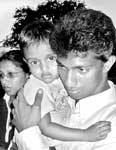
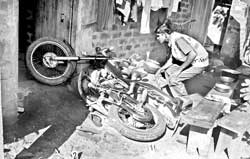











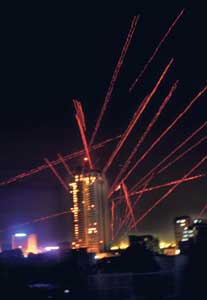
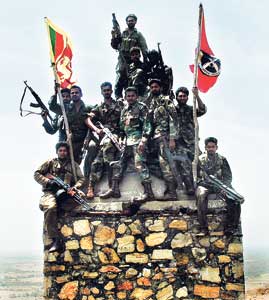

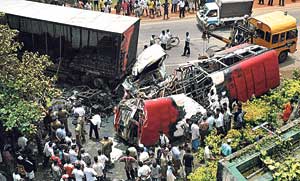
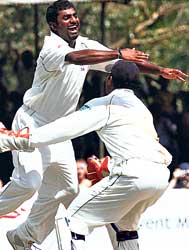
 Arugam Forum
Arugam Forum Arugam Photo Galleries on Picasa
Arugam Photo Galleries on Picasa Old Website
Old Website Press Coverage
Press Coverage Surf Forecast for Arugam Bay
Surf Forecast for Arugam Bay
TODAY’s Comments